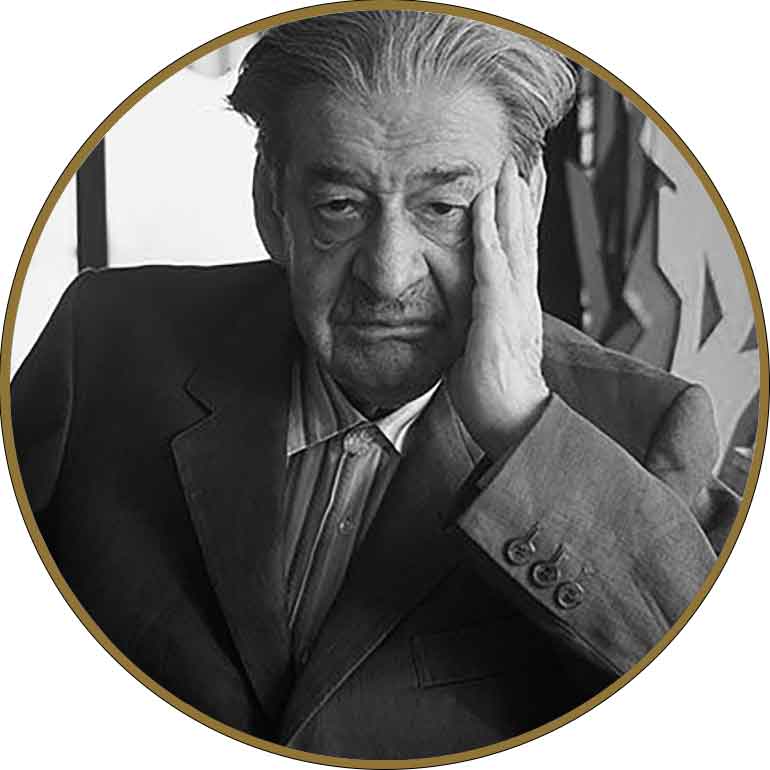Giulio Turcato biography

Giulio Turcato, born in Mantua on March 16, 1912, and passed away in Rome on January 22, 1995, is an Italian painter known as one of the main exponents of Italian informal abstraction. His artistic training began in Venice, where he attended the art high school and the artistic nude school.
In the early years of his career, he spent periods in Palermo and Milan, exhibiting for the first time at the Venice Biennale in 1942 with the artwork "Maternity". In 1943, he moved to Rome, becoming a regular at the Osteria Fratelli Menghi, a renowned meeting place for personalities from the artistic and literary world. In Rome, he collaborated with artists such as Emilio Vedova and Toti Scialoja, exhibiting in various galleries and participating in the Italian Resistance.
After the war, Giulio Turcato decided to settle permanently in Rome, but in 1946 he traveled to Paris, where he studied the works of Kandinsky and Picasso. The following year, he signed the "Forma 1" manifesto and participated in the National Exhibition of Figurative Arts in Rome. In 1948, he joined the New Front of the Arts group and took part in the Venice Biennale, later distancing himself due to artistic and political differences. In 1952, he joined the Group of Eight, a collective of Italian abstract artists.
In 1949-1950, he took part in Giuseppe Verzocchi's project, sending the artwork "The unloaders" for a collection dedicated to the theme of work. Meanwhile, his abstract style evolved, becoming increasingly unique and original. He used materials such as sand and foam rubber, creating artworks like the "Lunar surfaces".
Giulio Turcato participated in numerous editions of the Venice Biennale, winning various awards, including the Acquisition Prize in 1950 with the "Mine" and the National Prize in 1958. He exhibited in important museums and galleries worldwide, including the MoMa in New York and the Staatsgalerie Moderner Kunst in Munich.
Besides painting, Giulio Turcato also devoted himself to teaching, working at the art high school in Rome from 1953 to 1982. His political and social commitment, along with his interest in biological sciences, is evident in his artworks, characterized by non-objective forms and an innovative use of materials.
In 2012, to celebrate the centenary of his birth, an exhibition was set up at the Museum of Contemporary Art in Rome, showcasing an overview of his artistic production spanning over twenty years.
Giulio Turcato died in Rome on January 22, 1995, leaving a significant artistic legacy and a prominent place in the history of Italian art of the twentieth century.



